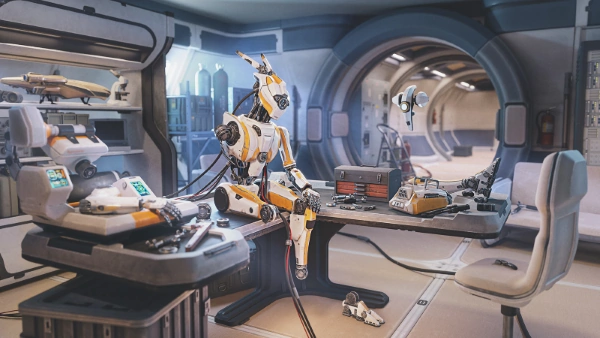
Posted on Wednesday, August 25 2021 @ 18:55 CEST by Thomas De Maesschalck
UL Benchmarks announces the 3DMark benchmark suite is now the first to offer a test for all four major DirectX 12 Ultimate features. Starting today, the paid Advanced Edition of 3DMark gets a Sampler Feedback feature test. The other three major features of DirectX 12 Ultimate are DirectX Raytracing Tier 1.1, Mesh Shaders, and Variable Rate Shading (VRS). Details on how the new test works are described below.

NEW — 3DMark Sampler Feedback feature test
Today’s update adds a Sampler Feedback feature test. Sampler feedback helps game developers use texture streaming and texture shading more efficiently. The 3DMark Sampler Feedback feature test shows how games can boost frame rates by using sampler feedback to optimize texture space shading operations.
What is sampler feedback?
Sampler feedback is a new feature in DirectX 12 Ultimate that enables more efficient handling of textures and shading by recording data on texture sampling and locations.
In 3D graphics, texture space shading is a technique that allows shading to be applied in texture space rather than in screen space on the visible pixels. Texture space shading allows for performance optimizations such as reusing shading from previous frames.
Sampler feedback can be used to further optimize texture space shading. For example, regions in the texture space that won’t be visible on the screen can be skipped, resulting in an increase in shading performance. Using sampler feedback in this process is faster than generating the same information through custom shaders.
Sampler feedback is a very complex feature, and we recommend reading Microsoft’s DirectX Developer Blog and the DirectX functional spec for detailed information on how it works.
Test sampler feedback performance with 3DMark
The 3DMark Sampler Feedback feature test shows how game engines can improve performance by using sampler feedback to optimize texture space shading.
The test scene is a robot repair shop. Texture space shading is used to shade the scene as the camera moves around the environment.
The test runs in two passes. In the first pass, the scene uses texture space shading and a custom software solution that generates information about which texels require shading. In the second pass, sampler feedback is used to optimize the texture space shading operations by more efficiently identifying the texels that are being accessed.
The result of the test is the average frame rate for each pass and the difference between the two expressed as a percentage. You can read more about the test in the 3DMark user guide.
Interactive mode
The 3DMark Sampler Feedback feature test includes an interactive mode that helps illustrate the small visual difference between sampler feedback and the reference software implementation. You can pause and jump to different parts of the timeline, change settings in real time, and export frames for comparison. You can also toggle sampler feedback on and off, change the shading level of detail (LOD) and visualize the shading resolution used for each surface.
3DMark DirectX Raytracing feature test
Measure the pure ray-tracing performance of your graphics card with the 3DMark DirectX Raytracing feature test. Instead of relying on traditional rendering, the whole scene is ray-traced and drawn in one pass. The result of the test depends entirely on ray-tracing performance. You can use this test to compare the performance of dedicated ray-tracing hardware in the latest graphics cards.
3DMark Mesh Shader feature test
Mesh shaders introduce a new approach to geometry processing that simplifies the graphics pipeline while also giving game developers more flexibility and control. The 3DMark Mesh Shader feature test shows you how game engines can improve performance by using the mesh shader pipeline to efficiently cull geometry that is not visible to the camera.
3DMark VRS feature test
Variable Rate Shading (VRS) helps games improve performance by selectively reducing the level of detail in parts of the frame where there will be little noticeable effect on image quality. The 3DMark VRS feature test helps you compare differences in performance and image quality when using Tier 1 and Tier 2 Variable Rate Shading.
